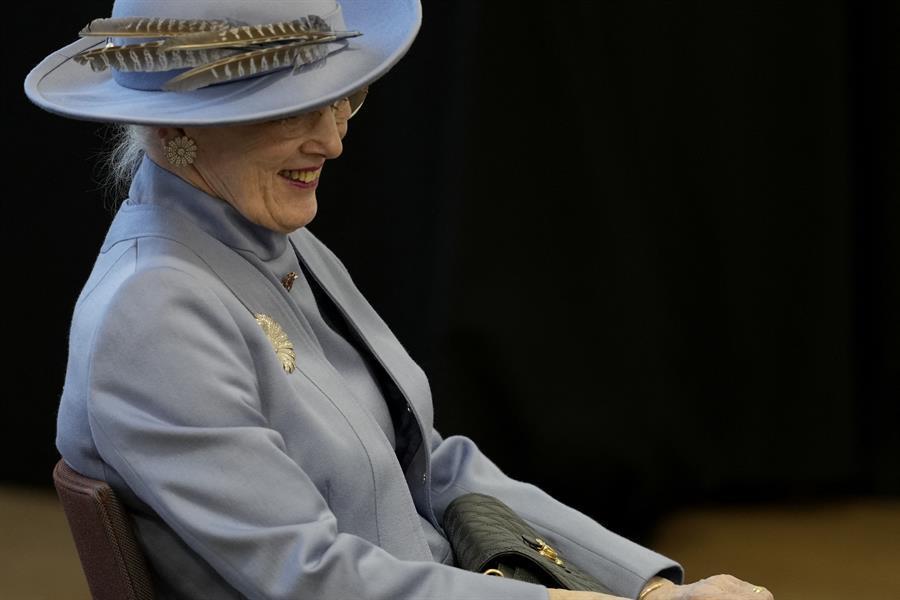
Denmark’s 81-year-old Queen Margrethe has so far escaped contracting COVID-19 and is fully vaccinated. But the pandemic is once again spoiling an important party for the popular monarch.
In 2020, it killed public celebrations for her 80th birthday. Now, two days of major celebrations for her 50th anniversary on the throne of Europe’s oldest ruling monarchy, have been postponed until September.
Margrethe will, however, lay flowers at the grave of her parents at Roskilde cathedral, west of Copenhagen, where Danish royals have been buried since 1559. Earlier, she is to meet with the government and attend a reception at Parliament.
Postponed jubilee events include being cheered by thousands from the balcony of the Amalienborg Palace in Copenhagen, a ride through the capital in a horse-drawn carriage, a gala performance at the Royal Theater and a festive banquet.
On Jan. 14, 1972, her father, King Frederik IX, died after a short illness. The following day, a red-eyed Margrethe, aged 31, stood on the balcony of the downtown Christiansborg Castle and was formally proclaimed queen before a crowd of thousands.
Throughout her reign, the queen has crisscrossed the realm and made numerous visits abroad.
Last year she traveled to Denmark’s self-governing territories of the Faeroe Islands and Greenland. She also went to Berlin for the centennial of the 1920 reunification with Denmark of the southern part of the Jutland peninsula which had been under German rule.
When she has a break from official duties, Margrethe, Europe’s second longest reigning monarch after Britain’s Queen Elizabeth II, paints, sketches, illustrates books, creates church textiles and embroiders.
She has also created costumes and sets for several ballets at the Tivoli gardens, Copenhagen’s downtown amusement park.
Born on April 16, 1940, a week after the start of Nazi Germany’s World War II occupation of Denmark, the infant princess became a symbol of hope to many Danes in the war years.
It took a vote to make her queen, though. In 1953, the Danish Constitution was changed following a referendum in which more than 85 percent of participants voted to allow female succession.
Previously, the Danish throne had descended only through the male line, but the rise of feminism and the fact that Frederik and Swedish-born Queen Ingrid had three daughters but no son, had swayed public opinion.
The Danish constitution gives Margrethe no real political power but she is clearly well-versed in law and knows the content of legislation she is called upon to sign.
Her popularity has in part grown because of her straightforward talking in her annual televised New Years speeches, where she has spoken about being less “selfish,” integrating foreigners and tackling loneliness.
In 2014, 82 percent of respondents in a poll opposed abolishing the monarchy.